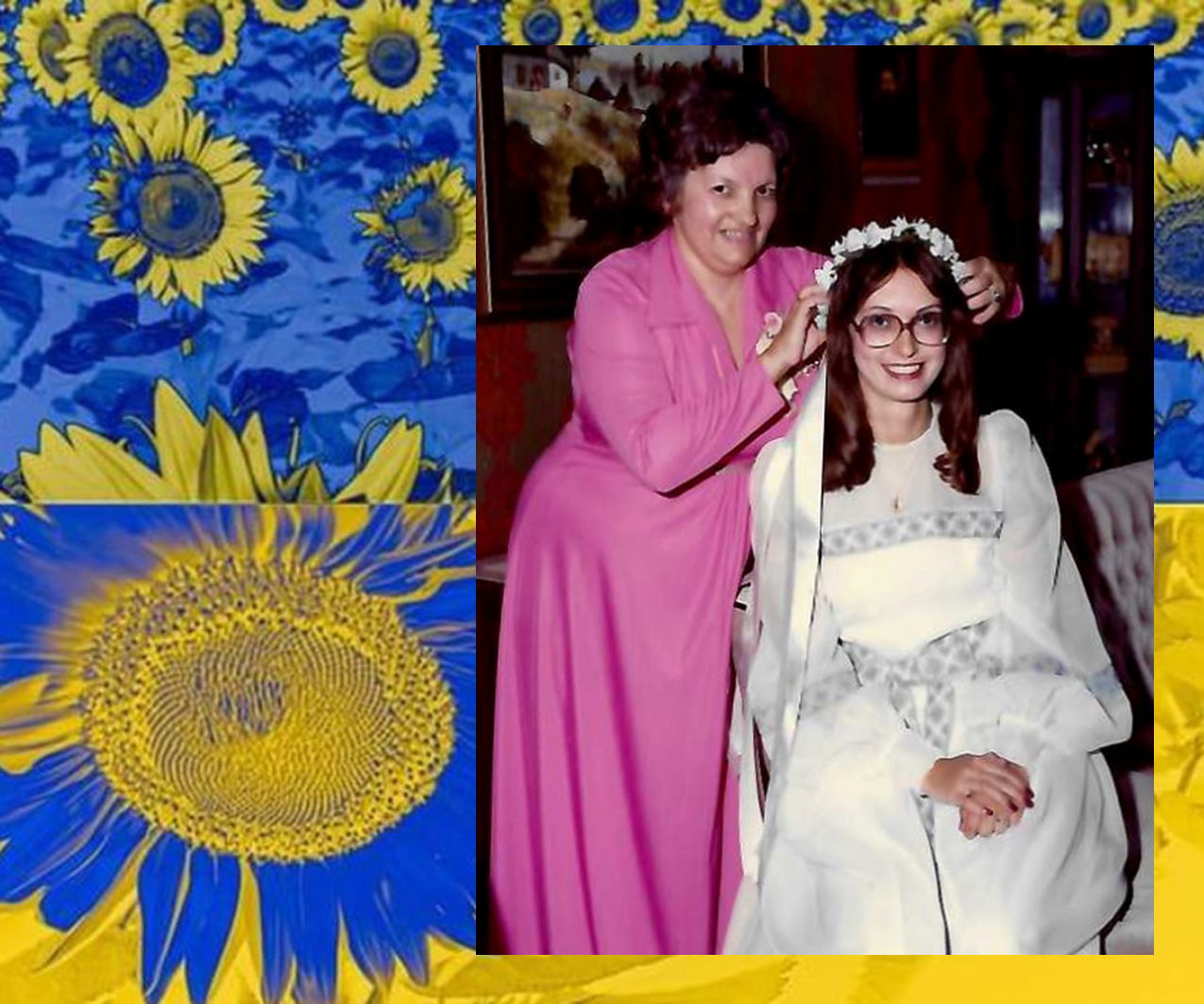
Diasporic Postcards: SAY YES TO THE DRESS
It has been countless months since I’ve added a new piece to this series. The truth is I knew from the start of the intensified conflict in Ukraine that the time would come when the war would become ‘normalized.’ And when it became a part of my normalized life, I didn’t want to admit to it. At that same time, I also recognized that normalization has different forms depending on whether you’re living in diaspora or in the heart of a war zone. For my relatives in Ukraine, at first, when sirens screamed warning of attacks and potential bombing, they immediately ran for cover in shelters. Then came a time when they would simply pause when alarms signaled, and they only ran for shelter if they heard the rattling of structures. Eventually, they simply started carrying on with whatever they were doing, sirens howling or not, unless the power went off.
But in the comfort of observing a war from a distance, initially the news of any kind of military violence or exposure of war crimes brought on deep soul sobbing. But as time passed, the tears became less frequent and outrage transformed into thoughts such as ‘did we expect anything less?’ And as it became evident that the war might be as protracted as we witnessed in Syria, Afghanistan, and elsewhere, the tear ducts felt desiccated. Instead, reactions to my daily check-ins on the news were minimized into a feeling of a hollowed-out heart centre. And still, I feel as helpless today as on the day of the invasion.
Growing up, my parents insisted my brothers and I speak Ukrainian, learn the history, become familiar with the geography, and read the literature. I resisted. I just wanted to fit in with my Anglo friends, especially since my parents’ constant messaging that the culture of their homeland was at risk felt like a paranoid response. There was an entire living Ukrainian culture on the other side of the world, after all. Little did I know that my parents’ worst fears of another genocide and the deliberate destruction of Ukrainian culture would manifest in my lifetime.
So, last summer, when my 45-year-old wedding dress, ever so lovingly embroidered by my mother, came back into my possession, I wasn’t sure what to do with it. Following the wedding, the dress had been cleaned and vacuum-sealed in a rather large keepsake box. The marriage had lasted less than a decade and I had no romantic attachment to the dress. And with no successors, the dress that my brother returned to me when he recently moved to the States seemed inevitably doomed for textile recycling or even landfill, as I had no room to store it in my tiny Torontonian footprint.
But with the war in Ukraine, saving this dress suddenly became a mission for me. At almost 50 years-old, it wasn’t just a piece of family memorabilia, it was an exquisite artifact representing a melding of Ukrainian-Canadian culture. So, I contacted the Royal Ontario Museum, where I had worked for the greater part of my career, and reached out to its Textiles and Costume Department. For months, my attempts to contact them were ignored, so I then turned to the Textile Museum of Canada in Toronto. They didn’t reply to my emails or phone calls either. Finally, I heard back from the ROM, and there was a gentle nibble, but they inexplicably and abruptly ended the conversation.
While researching other museums that might be interested, I discovered there was a Ukraine Museum of Canada – in Toronto, no less – and not that far from my home. I was embarrassed that I didn’t know it existed, but then I had grown up in Hamilton and was not connected with Toronto’s Ukrainian community in any way. Surely, they would be interested in the dress, I thought, especially since the focus of their holdings is textiles. But as with the other museums, I was met with radio silence and I was ready to surrender.
But I’m on a soul quest that has hastened my need to rehome the dress, and so I contacted the Ukraine Museum of Canada one last time. Again, crickets for months until one day, out of the blue, I received an email from the museum saying they’d love to add the dress to their permanent collection. Within a week I set out with the enormous box on public transit to deliver it. But I was anxious. The sealed box had never been opened and I had no idea whether acid-free tissue paper had been used to protect the garment or whether the fabric had yellowed or even considerably deteriorated.
When I arrived at the museum, I was greeted by the curator with warmth, enthusiasm, and palatable excitement. So, the pressure was on. I was immediately whisked away to an area away from the madding crowd where the curator delicately removed the lid and the plastic covering that had been used to seal the box. And lo and behold, the dress and the vinók (the head wreath), were in perfect condition.
Tears welled up in my eyes because the momentousness of the occasion suddenly overcame me. My mother’s beautiful handiwork was going to be memorialized for years, perhaps even generations to come, and the delicate cross-stitch embroidery crafted with my mother’s skilled hands and patient spirit might someday be admired by future Ukrainian Canadians. The energetic imprint of love would endure.
On my trek home from the museum that afternoon, I was floating above the earth knowing I had just fulfilled one of the most meaningful tributes to my mother I could ever have imagined. I was so thankful I had followed the messages from my soul and had kept trying to find a new home for the dress. More than anything, I was profoundly grateful that the Ukraine Museum of Canada said YES to the dress.
